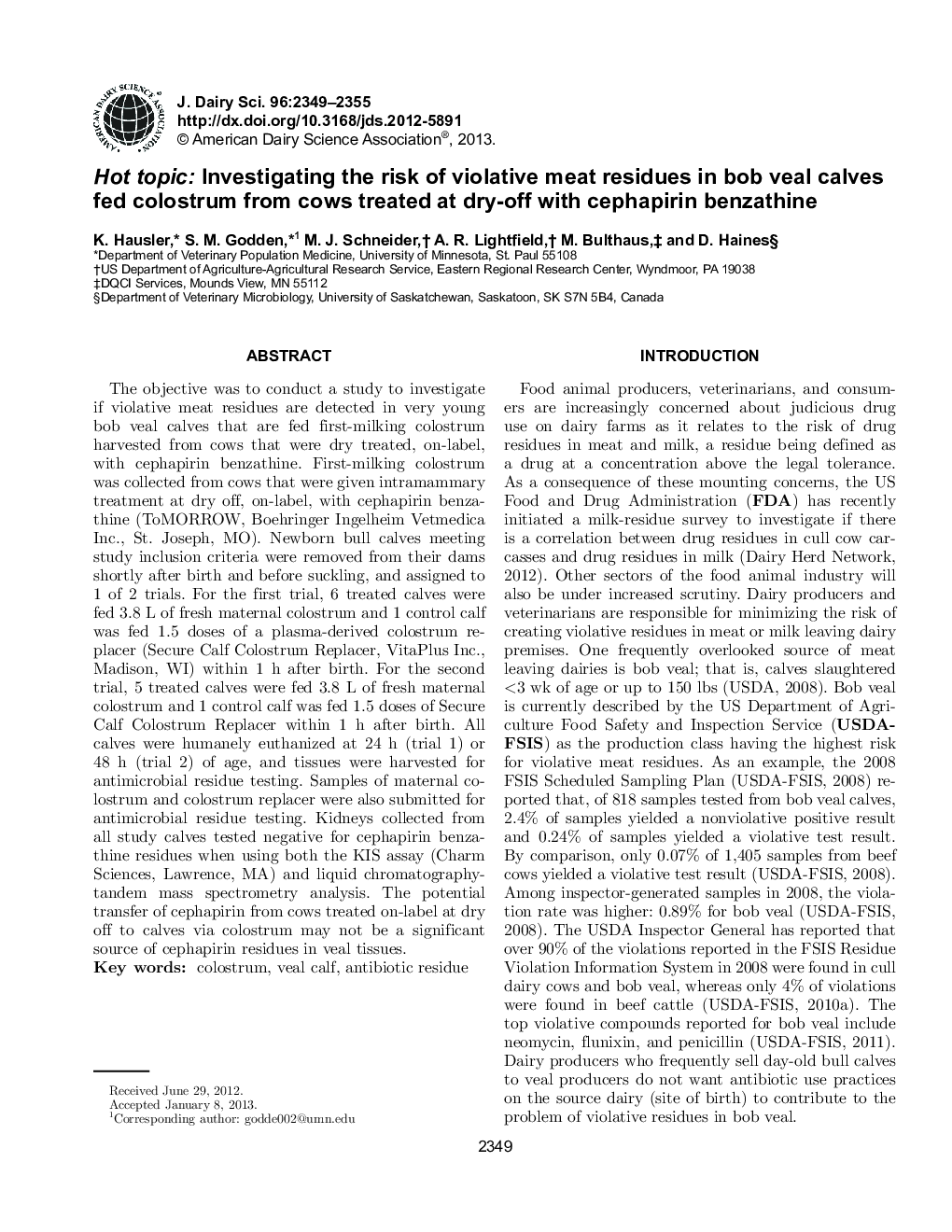| Article ID | Journal | Published Year | Pages | File Type |
|---|---|---|---|---|
| 10979043 | Journal of Dairy Science | 2013 | 7 Pages |
Abstract
The objective was to conduct a study to investigate if violative meat residues are detected in very young bob veal calves that are fed first-milking colostrum harvested from cows that were dry treated, on-label, with cephapirin benzathine. First-milking colostrum was collected from cows that were given intramammary treatment at dry off, on-label, with cephapirin benzathine (ToMORROW, Boehringer Ingelheim Vetmedica Inc., St. Joseph, MO). Newborn bull calves meeting study inclusion criteria were removed from their dams shortly after birth and before suckling, and assigned to 1 of 2 trials. For the first trial, 6 treated calves were fed 3.8Â L of fresh maternal colostrum and 1 control calf was fed 1.5 doses of a plasma-derived colostrum replacer (Secure Calf Colostrum Replacer, VitaPlus Inc., Madison, WI) within 1Â h after birth. For the second trial, 5 treated calves were fed 3.8Â L of fresh maternal colostrum and 1 control calf was fed 1.5 doses of Secure Calf Colostrum Replacer within 1Â h after birth. All calves were humanely euthanized at 24Â h (trial 1) or 48Â h (trial 2) of age, and tissues were harvested for antimicrobial residue testing. Samples of maternal colostrum and colostrum replacer were also submitted for antimicrobial residue testing. Kidneys collected from all study calves tested negative for cephapirin benzathine residues when using both the KIS assay (Charm Sciences, Lawrence, MA) and liquid chromatography-tandem mass spectrometry analysis. The potential transfer of cephapirin from cows treated on-label at dry off to calves via colostrum may not be a significant source of cephapirin residues in veal tissues.
Keywords
Related Topics
Life Sciences
Agricultural and Biological Sciences
Animal Science and Zoology
Authors
K. Hausler, S.M. Godden, M.J. Schneider, A.R. Lightfield, M. Bulthaus, D. Haines,
